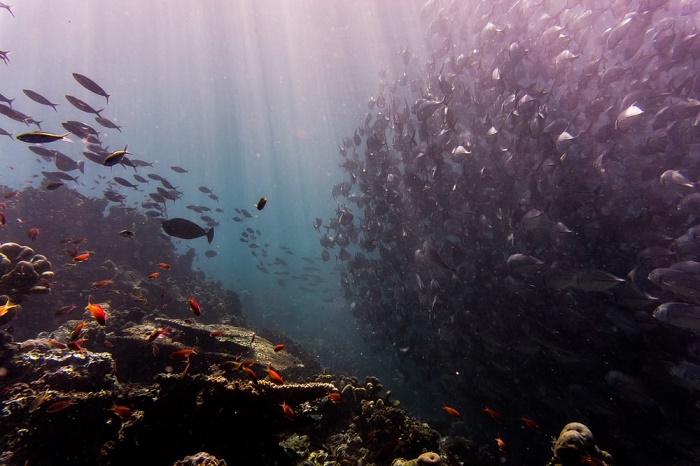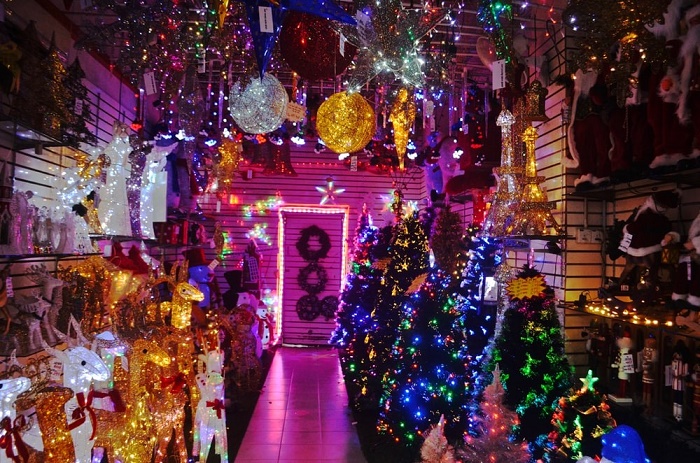Why We Must Have a Glitter-Free Christmas to Protect the Environment

If you associate glitter with the festive season, then you are not alone. Glitter has traditionally gone hand in hand with the colorful and merry Christmas mood and events. But concern about the effect that glitter is having on our environment has been growing more and more over time.
During Christmas, millions of things are adorned or wrapped with the shiny substance, from wrapping paper to gift cards, baubles, and plants. Christmas isn’t Christmas without the sparkly accessory, right? Think about it carefully, is glitter really needed in such excessive amounts?
The majority of commercial products that contain glitter are often single-use products, such as cards and wrapping paper. And often these items are made using inorganic glitter that is not biodegradable.
Most glitter is made from aluminum that is bonded with polyethylene terephthalate, which is a form of microplastic that once disposed off finds its way into our waterways and oceans.
Due to this pollution of our oceans, many environmentalists, climate activists, and even retailers in leading economies are calling for a worldwide ban on glitter and its overuse during Christmas holidays and other festivities.
But, you may still wonder, is a glitter-free Christmas really an effective way of combatting glitter pollution and protecting the environment?
How Glitter Affects Our Environment
The move to ban glitter follows growing concern over single-use plastics, such as straws, cups, and microplastics. After a tough UK microbead ban back in 2018, glitter has quickly found its place under increased scrutiny and is now classified as a microplastic in many places around the world.
Microplastics are tiny particles that pollute the environment and the oceans and that have been highlighted by environmentalists as pollutants. It is estimated there are 50 trillion particles of microplastics in the ocean. These particles have been found even in extremely remote locations, including arctic sea ice and deep-sea sediment.
Studies have found that a third of all fish caught in the North Sea contain microplastic particles, including glitter. Four billion particles of microplastics discovered in major water bodies should be a big concern for anyone who cares about the impact these microplastics are having on sea life, animals, and humanbeings.
Impact of Glitter on Marine Life

As more of us learn about the damage that microplastics are having on marine life, it’s important to understand just how marine life is impacted by these materials.
Glitter and other microplastics enter the oceans from rivers, where the water comes from wastewater in our homes and rainfall. Whilst many microplastics are removed in wastewater treatment sites, there are still harmful levels of microplastics that still find their way into our oceans.
Due to the incredibly small size of these particles, microplastics are often consumed by marine organisms that cannot tell the difference between food particles and the microplastics.
The food chain means that once these marine organisms consume these small plastic particles, when they are eaten by bigger fish, those fish then consume it also, and eventually it finds its way onto our plates, or in our pet food, and potentially even in people's supplements.
As you can imagine, the microplastics are micro, but their impact on the ocean, marine life, and humans is huge. This is why there is legitimate concern and a determined call for a ban on all single use plastics and microplastics around the world.
Researchers estimate on average each person consumes upto 120,000 particles of microplastic each year, whether by breathing air or eating food that contains them. And this is a conservative estimate.
Glitter Isn’t Needed for a Merry Christmas
After revelations of the environmental impact of glitter and backlash following retailers over-use of glitter, many companies in countries like the UK and US have banned the use of glitter in their Christmas range, focusing particularly on greeting cards and wrapping paper. And Christmas seems to be fairing just fine with the glitter ban in place.
Marks & Spencer, for example, have reported testing biodegradable alternatives and aim to be 100% glitter-free. Waitrose have also pledged that their own range of cards, wrapping paper, and crackers will be made with either environmentally friendly alternatives or glitter-free. Aldi have also scrapped plastic glitter from its Halloween and Christmas range.
Marks & Spencer noted that single use plastics are as important to their customers as it is their business. As such, all of their Christmas stationery range, which previously featured glitter, is recyclable and full of innovative patterns to minimize the use of glitter. M&S have also said they have removed over 1,000 tons of plastic packaging from across the business and now aim to ensure all of its packaging is widely or completely recyclable.
This trend in the retail sector of doing away with harmful glitter has been gathering pace in other countries too. It comes in the wake of a growing and long-overdue movement across the globe to vastly reduce the impact and damage that is caused by plastics and microplastics.

Guilt-Free Alternatives Rising and the Way to Go
Since the revelations of the impact of glitter and the UK's ban on microbeads, there has been a growing public outcry to remove and ban glitter altogether across the board.
In the same way that facial scrub manufacturers have turned to using naturally exfoliating materials, such as walnut and apricot husks and shells, many glitter manufacturers have started to produce biodegradable glitter types, which is a step in the right direction.
Biodegradable glitter is often made from cellulose, which comes from the cells of plants - usually eucalyptus trees. It is grown on land that is unsuitable for food crops or farming, and thanks to sustainable forestry initiatives, often requires very little water. This type of biodegradable glitter is also compostable and will disintegrate overtime when it comes into contact with water.
Retailers are also now recognizing just how important it is to their customers, their business, and the environment to tackle the serious issue of plastic pollution. By avoiding glitter in your business and homes, and removing plastics completely where possible, it helps protect the environment and curb adverse climate change,
Sustainability is the way to go for businesses today. Making environmentally friendly swaps and ensuring that packaging is recyclable, for example, will make any business more appealing to customers while protecting the environment and people's health.
Some manufacturers made changes to remove glitter and similar microplastics from cosmetic products long before it was required by law. And the industry is now reviewing how best to make all other products that use and contain glitter as environmentally friendly as possible.
So, are you onboard to protect the environment with a glitter-free Christmas and New Year celebrations?





















